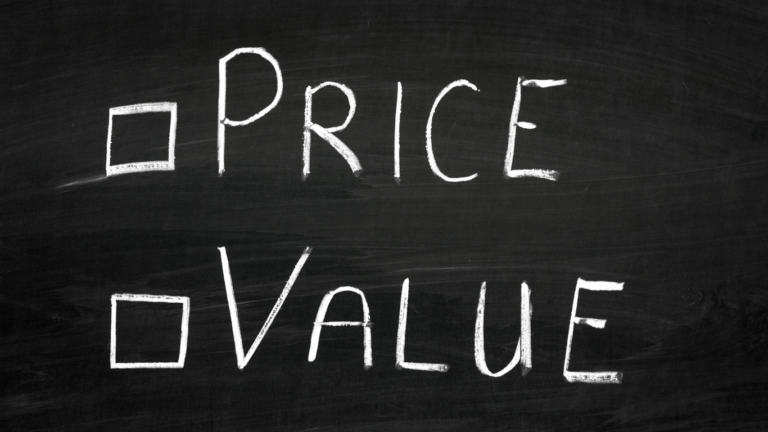Value investing is an investment strategy that focuses on finding stocks that look to be undervalued. Stocks that value investors actively seek out are those that the market believes is undervalued. Overreaction to good and bad news, they argue, causes stock price fluctuations that aren’t in line with a company’s long-term prospects. Profits can be made by taking advantage of the overreaction and purchasing equities at lower prices—on sale.
In the world of Trading, people say that the reward is related to the risk appetite. Big profits can be obtained only from high-risk investments, and low-risk investments have smaller yields. But what if I told you that there is an investing strategy that gives you an unfair advantage and by lowering the risk, you actually maximize the profits.
Value Investing – A Brief History
Warren Buffet is the biggest investor of all time. His performances are out there for everyone to check. He started from ZERO and now his net worth is over US $93 billion. I truly believe that we have to listen to what this man says.
Malcolm Gladwell stated in “Outliers” that in order to be an expert in a specific field you need 10 000 hours of practice. Warren Buffet has been in the investing game for over 60 years and has been working 10-12 hours per day. That means over 200 000 hours of practice.
The theory behind the value investing strategy is easy to understand, but it’s up to you to take action and implement it.
Value Investing – The Fundamental Principles
There are two fundamental principles :
-
The Price is different from the Value
-
The Margin of Safety
-
Treat the stocks as a part of a company, not just some random pieces of paper that you can easily trade.
Value Investing – In 3 Simple Steps
You need to follow these three simple steps in order to be successful long term with value investing:
1.Learn how to evaluate the intrinsic value of a company
Back in the days, when Benjamin Graham came up with this method, it was much easier to find these companies whose stock prices were way below their intrinsic value. Nowadays it’s far more difficult, but not impossible.
For example, let’s say Company X has $10 million in cash in the bank. It has no assets or debts. If they issued a number of 1 million shares and the price of one share is 5$, you can buy the entire company with $5 million, shut it down and make a $5 million profit. Pretty cool, right?
In real life, it is not that simple and there’s no secret formula to establish this value. There are many factors that you have to consider, like profit, sales, growth rate, economical tendencies, the industry in which the company is active, and nevertheless, the quality of the management.
In future articles, I’ll cover in-depth how to evaluate these companies.
2.When is the right time to BUY
- After you have calculated the value of the company, check out the prices
- Invest only if you are comfortable with the margin of safety. Professor Graham used to invest if the margin of safety was at least 33%.
Be aware that your calculations might be wrong and you should compare the market price with your most pessimistic evaluation. At some point, the market price would be equal to the value of the company, but this could happen in a very long period of time, that’s why the most important quality in an investor is PATIENCE. Nobody can predict if the price of a stock has reached the minimum threshold, that’s you shouldn’t expect the price to go up as soon as you have bought the stocks.
The value of a company can be influenced by a number of events, it may fall or rise. That’s why, as long as you hold stocks of a company, you should always reevaluate the situation of the company to make sure that its value has not decreased.
3.When is the right time to SELL
There are a number of factors that you should consider when you decide to sell. The first rule is to sell when the market price has reached or it’s getting close to the intrinsic value of the stocks. Another scenario that should make you sell your shares is when the value of the company falls and cancels the margin of safety.
In some cases, it is a good idea to sell when a better opportunity presents itself. Let’s say that you find an investment opportunity with a market price 50% lower than its value, but you don’t have cash available. If another investment that you own has a growth potential of only 10%, it is a good idea to sell it and invest in the new opportunity.

In the end, I would like to quote mister Warren Buffet – the greatest investor of all times:
“I would like to say one important thing about risk and reward. Sometimes risk and reward are correlated in a positive fashion. If someone were to say to me, ‘I have here a six-shooter and I have slipped one cartridge into it. Why don’t you just spin it and pull it once? If you survive, I will give you $1 million.’ I would decline – perhaps stating that $1 million is not enough. Then he might offer me $5 million to pull the trigger twice – now that would be a positive correlation between risk and reward!”
You can read the first part of the investing lesson here.
Make sure you read the next article to learn how to always pick a winner when investing in stocks!

